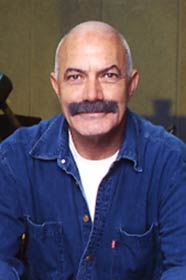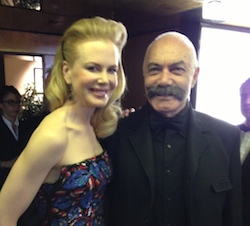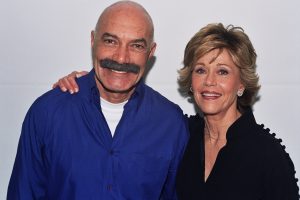“One of the most profoundly pessimistic tales of human existence ever to achieve a lasting popularity”–Critic Andrew Sarris in his book, You Ain’t Heard Nothin’ Yet.
A cycle of movies appeared just at the end of WWII, including It’s a Wonderful Life (1946) and Stairway to Heaven (1946), which tapped into many people’s experiences of loss of loved ones and offering a kind of consolation.
It’s a Wonderful Life premiered at the Globe Theatre in New York City on December 20, 1946, to mixed reviews.
Capra thought the contemporary critical reviews were either universally negative, or at best dismissive, which was not the case.
Time magazine wrote: “It’s a Wonderful Life is a pretty wonderful movie. It has only one formidable rival (Goldwyn’s The Best Years of Our Lives) as Hollywood’s best picture of the year. Capra’s inventiveness, humor, and affection for human beings keep it glowing with life and excitement.”
Too Sentimental
Bosley Crowther, of The New York Times, complimented the actors, including Stewart and Reed, but concluded, “the weakness of this picture is the sentimentality of it—its illusory concept of life. Capra’s nice people are charming, his small town is a quite beguiling place and his pattern for solving problems is most optimistic and facile. But somehow, they all resemble theatrical attitudes, rather than average realities.”
The film went into general release on January 7, 1947, placing 26th ($3.3 million) in box-office revenues, one place ahead of another Christmas film, Miracle on 34th Street.
The film was supposed to be released in January 1947, but was moved up to December 1946 in order to qualify for the 19th Academy Awards, then held in March 1947.
This decision proved worse for the prospects of the film, as 1947 did not have the stiff competition as 1946. If it entered the 1947 awards, its strongest competitor would have been Miracle on 34th Street.
The number-one grossing movie of 1947, The Best Years of Our Lives, made $11.5 million. In contrast, Capra’s film recorded a loss of $525,000 at the box office for RKO.
FBI Claims: Film Discredited Bankers
On May 26, 1947, the Federal Bureau of Investigation (FBI) issued a memo: “With regard to It’s a Wonderful Life, redacted stated in substance that the film represented rather obvious attempts to discredit bankers by casting Lionel Barrymore as a ‘scrooge-type’ so that he would be the most hated man in the picture. This, according to these sources, is a common trick used by Communists. [In addition, redacted stated that, in his opinion, this picture deliberately maligned the upper class, attempting to show the people who had money were mean and despicable characters.”
Film critic Andrew Sarris observed as “curious” that “the censors never noticed that the villainous Mr. Potter gets away with robbery without being caught or punished in any way.”
Henry Potter (Lionel Barrymore) was placed in AFI’s 100 Years … 100 Heroes & Villains as number six of villains, while George Bailey was voted number 9 of heroes.
In 1990, It’s a Wonderful Life was deemed “culturally, historically, or aesthetically significant” by the United States Library of Congress and selected for preservation in their National Film Registry.
In 2002, Channel 4 in the UK ranked It’s a Wonderful Life as the seventh-greatest film ever made in its poll “The 100 Greatest Films.”
The channel airs the film to British viewers annually on Christmas Eve.
Fantasy Film?
In June 2008, AFI revealed its 10 Top 10, the best 10 films in 10 “classic” American film genres, after polling over 1,500 people. It’s a Wonderful Life was acknowledged as the third-best film in the fantasy genre.
Capra’s Easy, Simpleminded Paths
In his review for The New Republic in 1947, critic Manny Farber wrote, “To make his points, Capra always takes an easy, simple-minded path that doesn’t give much credit to the intelligence of the audience.” He added: it has only a “few unsentimental moments here and there.”
Terrifying, Asphyxiating Story
Wendell Jamieson, in a 2008 article for The New York Times observed that far from being simply a sweetly sentimental tale, it “is a terrifying, asphyxiating story about growing up and relinquishing your dreams, of seeing your father driven to the grave before his time, of living among bitter, small-minded people. It is a story of being trapped, of compromising, of watching others move ahead and away, of becoming so filled with rage that you verbally abuse your children, their teacher, and your oppressively perfect wife.”
Pottersville: Toxic Town–Now as Then
“Salon” writer Gary Kamiya expressed the opposing view that “Pottersville rocks: The gauzy, Currier-and-Ives veil Capra drapes over Bedford Falls has prevented viewers from grasping what a tiresome and, frankly, toxic environment it is … We all live in Pottersville now.”
Christmas Staple
The film was elevated to the status of a classic three decades after its initial release, when it became TV staple during Christmas season in 1976.
This came as a welcome surprise to director Capra. “It’s the damnedest thing I’ve ever seen,” he told The Wall Street Journal in 1984. “The film has a life of its own now, and I can look at it like I had nothing to do with it. I’m like a parent whose kid grows up to be President. I’m proud … but it’s the kid who did the work. I didn’t even think of it as a Christmas story when I first ran across it. I just liked the idea.”
Combating Atheism
In a 1946 interview, Capra described the theme as “the individual’s belief in himself” and claimed that he made the film “to combat a modern trend toward atheism.”
The film ranked 283rd among critics, and 107th among directors, in the 2012 Sight & Sound polls of the greatest films ever made.
Many filmmakers have praised the film, ranging from Spielberg, Akira Kurosawa, Frank Darabont and David Lynch.
Spielberg once said of the film: “It’s a Wonderful Life shows that every human being on this Earth matters — and that’s a very powerful message.”
Orson Welles played Mr. Potter in the Made-for-TV remake, It Happened One Christmas.
Oscar Movies: It’s a Wonderful Life
Prior to its Los Angeles release, Liberty Films mounted extensive promotional campaign that included daily ads highlighting the film’s players, especially Jimmy Stewart, along with comments from reviewers.
Jimmy Starr wrote, “If I were an Oscar, I’d elope with It’s a Wonderful Life lock, stock and barrel on the night of the Academy Awards.”
The New York Daily Times published an editorial that declared the film and James Stewart’s performance to be worthy of Academy Award consideration.
At Oscars time, It’s a Wonderful Life received 5 Academy nominations, winning none.










